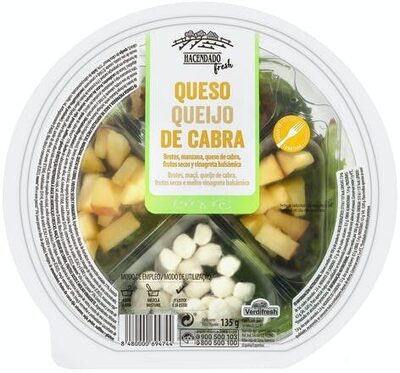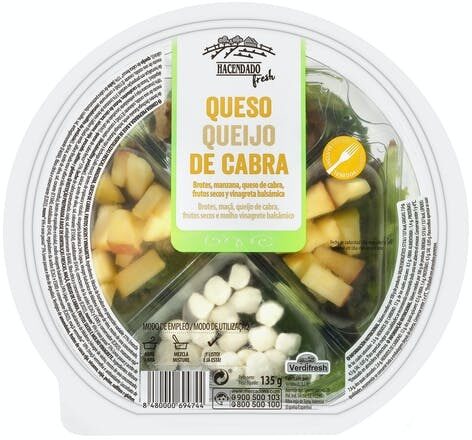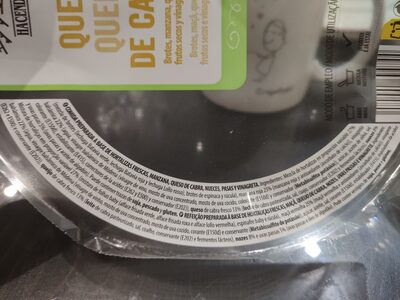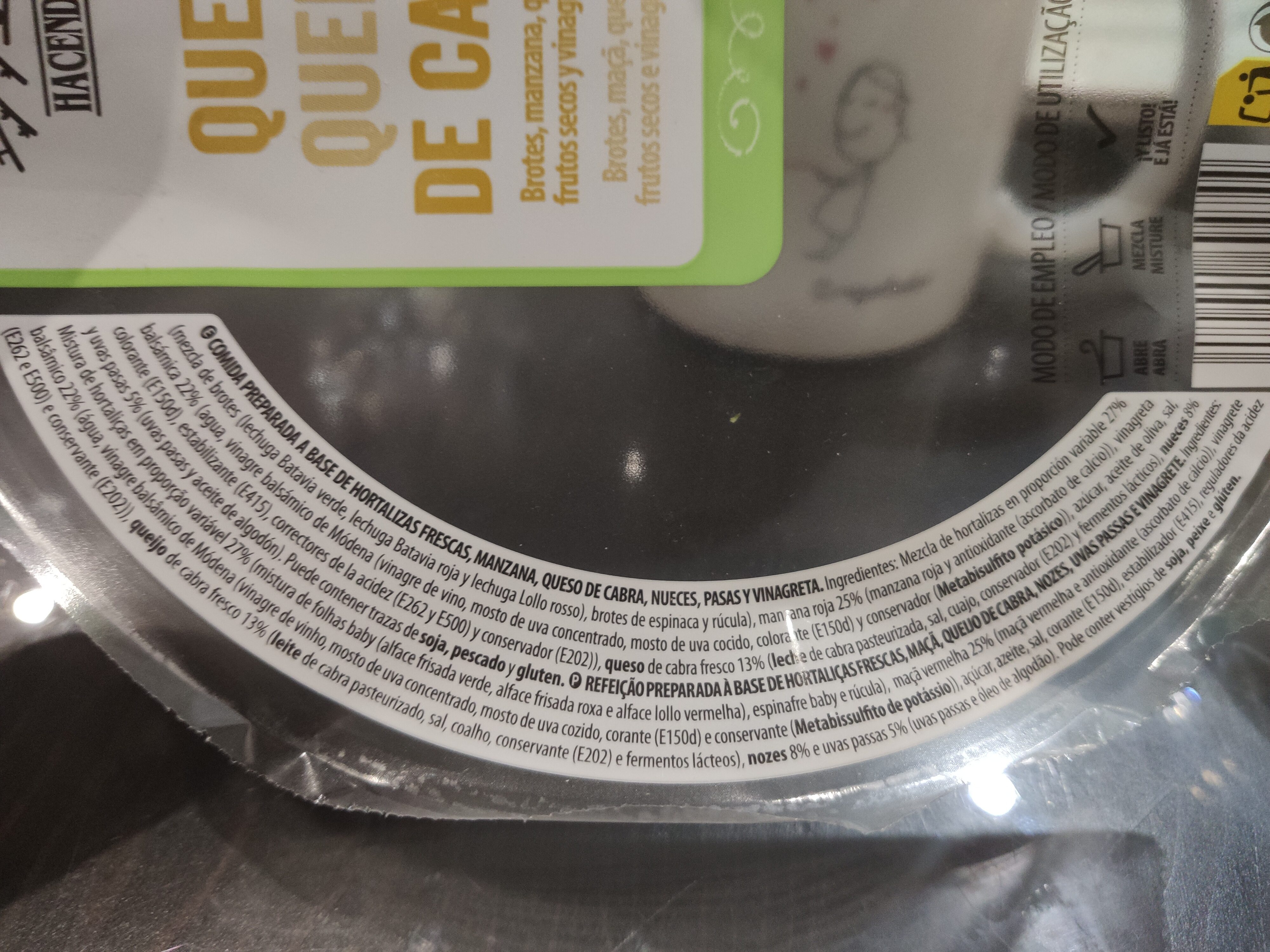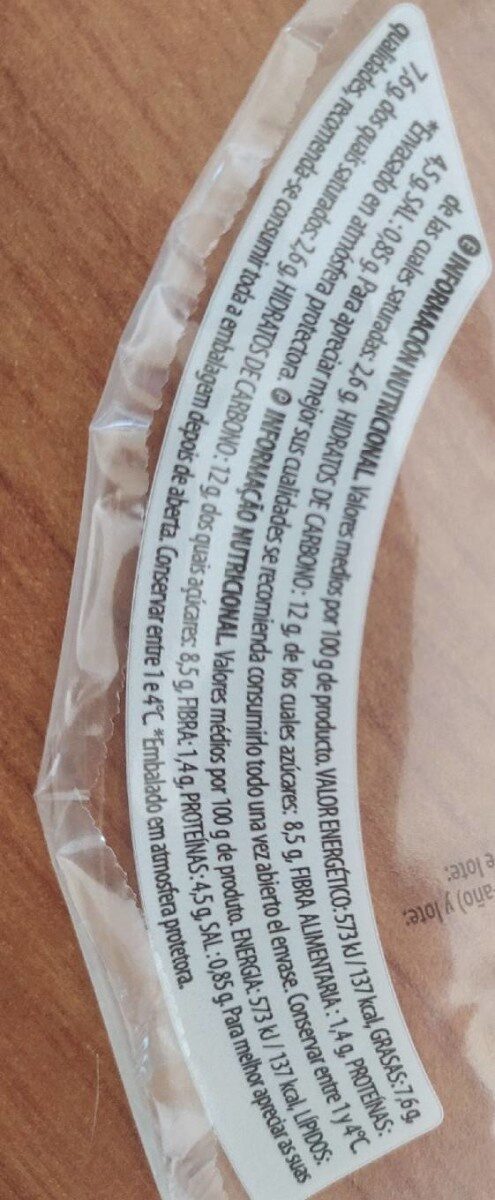Ensalada queso de cabra - Hacendado - 135 g
This product page is not complete. You can help to complete it by editing it and adding more data from the photos we have, or by taking more photos using the app for Android or iPhone/iPad. Thank you!
×
Barcode: 8480000694744 (EAN / EAN-13)
Quantity: 135 g
Brands: Hacendado
Categories: Meals, Prepared salads, Comidas preparadas, Ensaladas, Ensaladas preparadas
Labels, certifications, awards:
Green Dot
Stores: Hacendado
Countries where sold: Spain
Matching with your preferences
Environment
Packaging
Transportation
Report a problem
Data sources
Product added on by elcoco
Last edit of product page on by duhowpi.
Product page also edited by ayecptn, elcoco.86dfea01cf49b2293f1aeb0930bc4145, frankovsky, jumati, kiliweb, marionmoseby, musarana, naruyoko, roboto-app, thaialagata, vegetarian-app-chakib, yuka.CegbJ-SCQc4IJd_X96wV7hO5KsX4KuRTKE8gog, yuka.YmJoY1A3b2NxUE5ReDhRT3drcjZvT290NTdXQWNGR1FKdXNRSWc9PQ.
